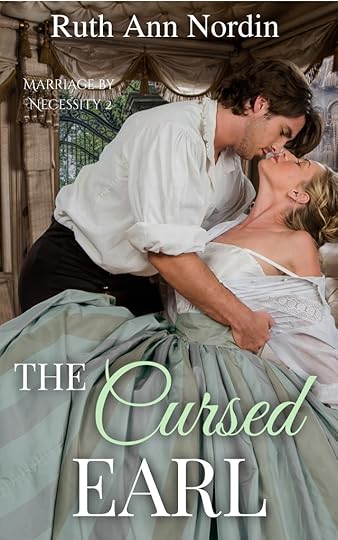Good and Bad Luck
While writing The Cursed Earl, I have had to research quite a bit into the topic of good and bad luck. My hero is a firm believer in good and bad luck, and this affects him and the other characters in this story. Since I found some of the stuff I learned to be interesting, I thought I’d make a post about it. 

The stuff applies specifically to European concepts of good and bad luck since the hero is in Regency England. I also couldn’t include everything I came across. There is a lot of superstitions out there. The stuff I mention below is what ended up in the book.
Good luck:
If a bird poops on you, it’s transferring its prosperity to you.
You wear a garment inside out for good luck, but it’s only good luck if you keep it on that way all day. If you do it by accident, it’s even better (but still remember to keep it that way all day).
A horseshoe over the entryway is luck if it’s turned the right way up. (If the horseshoe is the wrong way, it brings bad luck.)
If the bride and groom don’t see each other before the wedding, then it’s good luck. This goes back to a time of arranged marriages. The idea was that if the bride and groom saw each other before the ceremony, then they’d get cold feet and bolt for the door.
Wedding bells were considered to bring abundance and prosperity. Ringing the bells in a church was believed to ward off evil spirits.
Throwing birdseed at a wedding is said to bring fertility to the married couple. This tradition actually goes back to the ancient Assyrians and Egyptians. The Romans later used this tradition, too. They didn’t throw birdseed. Usually, they’d throw wheat or rice. Somewhere along the way, a myth came about that when birds ate rice, the rice absorbed all the water inside the birds and caused the birds to explode. Birdseed was encouraged for this reason.
It’s good luck for the husband to carry his wife over the threshold. There are a couple of reasons for this. One is that the groom didn’t want his wife to trip and fall. But in Medieval Europe, it was believed that evil spirits tried to go with the bride into the house. When the groom carried her over the threshold, the evil spirits couldn’t latch onto her shoes. Also, in ancient times, men would abduct women and take them into their homes. Since the women fought them, they had to carry the women over the threshold. (In the book, our hero carries the heroine over the threshold so she doesn’t trip or fall.)
Oddly enough, black cats are good luck in England. Such isn’t the case in the US.
A clover with four leaves is good luck because the four sides stand for faith, hope, luck, and love.
If you carry an acorn with you, it’s said to protect you from illnesses, aches, and pains. If you are sick, it’s said to speed up the recovery process and relieve pain.
A rabbit’s foot is lucky, but it has to be the left hind foot. Rabbits are seen as symbols of fertility and abundance. Now I know why my mom used to use the phrase “multiply like rabbits” when someone had a lot of kids.
Absentmindedly rocking an empty cradle means a baby is on the way.
Planting a leek in the house prevents the house from catching on fire.
Bad luck:
If you come across a funeral procession, it’s both bad luck and hastens death. The only way out of this is to hold onto your button. If you can avoid the procession altogether, that’s even better.
If you don’t hold your breath while passing a graveyard, you could breathe in the spirit of someone who recently died. (As a side note, if you don’t cover your mouth when you yawn, you risk an evil spirit entering you.)
Seeing an owl in the daytime means there will be a death.
Dreaming of a baby being born means someone is going to die. I had a friend in college who believed this.
A horseshoe without nails is considered bad luck. This goes back to Irish folklore involving Saint Dunstan. He was a blacksmith. Legend goes that the devil came to him looking for a horseshoe. Dunstan used iron nails to secure the red-hot horseshoe to one of his hooves, and it caused the devil so much pain, he begged Dunstan to remove it. Dunstan agreed to remove it so long as the devil promised to never enter a place where a horseshoe hangs above the door. The devil agreed and left. So that’s why iron is important in good luck with horseshoes. (As an aside, iron is also said to ward off fairies in Irish folklore. I learned that while writing An Earl In Time.)
Ravens aren’t lucky, per se, but if you see two or three together, things are going to get really bad.
Feathers of a peacock in the home is bad luck. The Evil-Eye on the feather is associated with wickedness.
Green is good luck UNLESS it’s Scheele’s Green. Back in the 1770s, a Sweedish chemist by the name of Carl Scheele created a greenish-yellow color that became known as Scheele’s Green. It was pretty popular in Europe. Unfortunately, this color had copper arsenite in it. This color was used in wallpaper, clothes, candles, and even children’s toys. When these items got damp and were allowed to mold, the arsenic was vaporized and released into the air. This ended up killing people, and many think Napoleon died from it.



